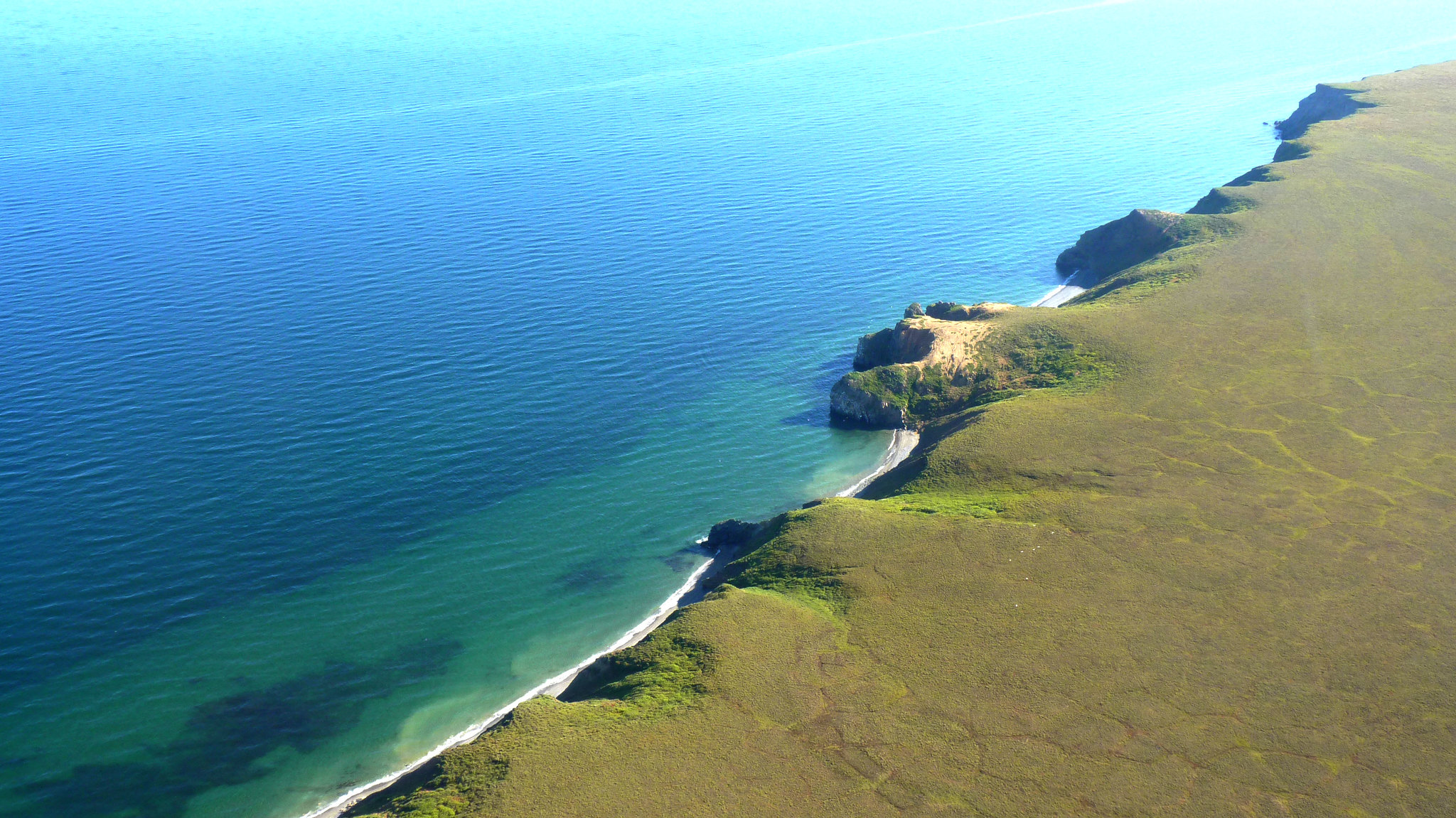What we can learn from a new look at the Bering Strait
A new environmental history by Bathsheba Demuth explores how different human systems on either side of the Arctic chokepoint altered the region's natural history.

As a home-schooled teenager from Decorah, Iowa, Bathsheba Demuth had her introduction to the Arctic in 1999 when she arrived in Old Crow, Yukon to help train sled dogs.
It was a rough start.
“I was apprenticed to a Gwitchin musher, a task that, in its specifics, was about sled dogs, but generally required learning how not to die,” she writes.
While she claimed to be useless at everything “except maybe brushing my teeth,” she soon learned how to manage.
What she had expected to be a three-month adventure in an exotic location turned into an intense and rewarding two-year education about sled dogs, caribou, salmon, Gwitchin culture and life in the Arctic.
One of the key lessons that has stayed with her is “if we pay attention, the world is not what we make of it; rather it is part of what makes us.”
Demuth, now a professor of environmental history at Brown, is the author of “Floating Coast: An Environmental History of the Bering Strait,” a groundbreaking new book that reaches far beyond the political boundaries of nation-states and the record of centuries of colonization to examine the region.
“I knew when I started graduate school that I wanted to work on the Arctic,” she said in a recent interview with the Cultures of Energy podcast. “Beringia is this kind of unexplored natural experiment.”
She draws connections between the natural world and Arctic inhabitants, arguing that there are not separate human and non-human worlds, but a single realm in which the two are one.
The two sides of the Bering Strait are more or less ecologically the same and there are cultural and linguistic ties between Indigenous populations that go back thousands of years.
“And yet in the 20th century they are divided between these kind of two major ideological systems between American-style capitalism and Soviet-style socialism.”
In “Floating Coast,” she analyzes how these two systems affected the environmental and economic development of the region and connects natural history to human history.
“One of the things that I found the most striking about the comparison between the United States and the Soviet Union in the 20th century is how often they ended up looking very, very similar to each other,” she said.
As ideological foes they had competing views of the future, but both political systems treated “the Indigenous peoples of the region as hopelessly behind the project of modernity.”
On the U.S. side, the end goal was to equip Indigenous residents to become individual participants in the market, while the Soviet vision was to reject the market and promote collective production.
The sources she encountered in archival collections and oral histories of Indigenous residents led her to choose the 19th century whaling expeditions as a starting point for her work.
“I realized that capitalist whaling basically starts where ecosystems in Beringia are the richest — it starts at sea looking to extract oil to pull energy out of this place,” she said.
The bowhead whale, which can live for two centuries, has been a critical element in the survival of human life for at least 2,000 years in the Bering Strait.
“Bowheads die so people can live, along the Bering Strait, sustaining both human bodies and Yupik culture,” Demuth wrote.
Coastal residents probably killed about 100 bowhead whales a year in the centuries before commercial whaling began in 1848.
Hundreds and then thousands of whales and tens of thousands of walruses were killed, what Demuth describes as a “siphoning” of resources out of Beringia that led to widespread famine and dislocation of human settlements.
On the Soviet side, the bowhead was not the major target, as the population had been greatly diminished by the 1930s, when the Soviet Union began promoting whaling to take advantage of new technologies that turned whale fat into margarine and cosmetics.
“The Soviet whaling fleet continued its merciless havoc in the North Pacific until 1979,” she writes, having killed up to 600,000 whales worldwide.
It’s not just a history of whaling that she provides, but a multi-layered look at how humans, animals and the natural environment have created history and how accelerating Arctic changes have become an urgent matter for the entire world.
“Over the years spent writing this book, my bodily experience of the place it describes has become its own archive,” she says, “a remembrance of consistent cold no child born today will experience.”
Dermot Cole can be reached at [email protected].